So there we were, now installed in the last spare room we were told was ours. The two ladies having shot off ahead to grab their rooms of choice whilst the men unloaded the baggage, and in some cases helped loading the baggage of the departing visitors too. Not a democratic way to begin the week but not a problem. All the rooms have their plus points so I would have been happy with any of them.
Mark and I picked up some camera gear and set off to explore the island.
What was I hoping for this year?
Photographs of Terns. The previous year's breeding had been disastrous and not only that it was also late. When I'd been there the Tern activity had been virtually non existent. Few nests had eggs and certainly there was no feeding activity whatsoever. This year things were looking very positive indeed. They were number one priority, after that it was anything of interest really.
One of the attractions of being a guest amongst this huge seabird colony is the opportunity to cut yourself off from the outside world, well with the exception of phoning home, and just sitting back and taking in your surrounds. Watching the everyday struggle of all these creatures makes you realise we as human beings have it easy. Life for so many of these birds is one long battle for survival. The weather is not the only thing they have to battle against. Finding food can involve long and difficult journeys and once they have it, bringing it back to the nest is just another opportunity for a predator to mug you for your catch, worse still, even become part of the food chain. Sitting on eggs for days on end just to have them stolen, long journeys to feed the chicks just to see them predated. I find it heartbreaking to watch but it's all part of the circle of life.
So how did the photography go?
In truth it was OK but not the best year by any means. One of the biggest problems was that the wind often blew quite strongly which is fine but from the wrong direction all week. It makes a huge difference as the wind dictates the way and direction a bird flies, or at least it's landing approach.
Then there was the nesting ground itself. Most of the terns were nesting in amongst the fairly high plant cover. Makes good sense of course as it offers better chances of survival for the chicks. From a photographic point of view not so good though.
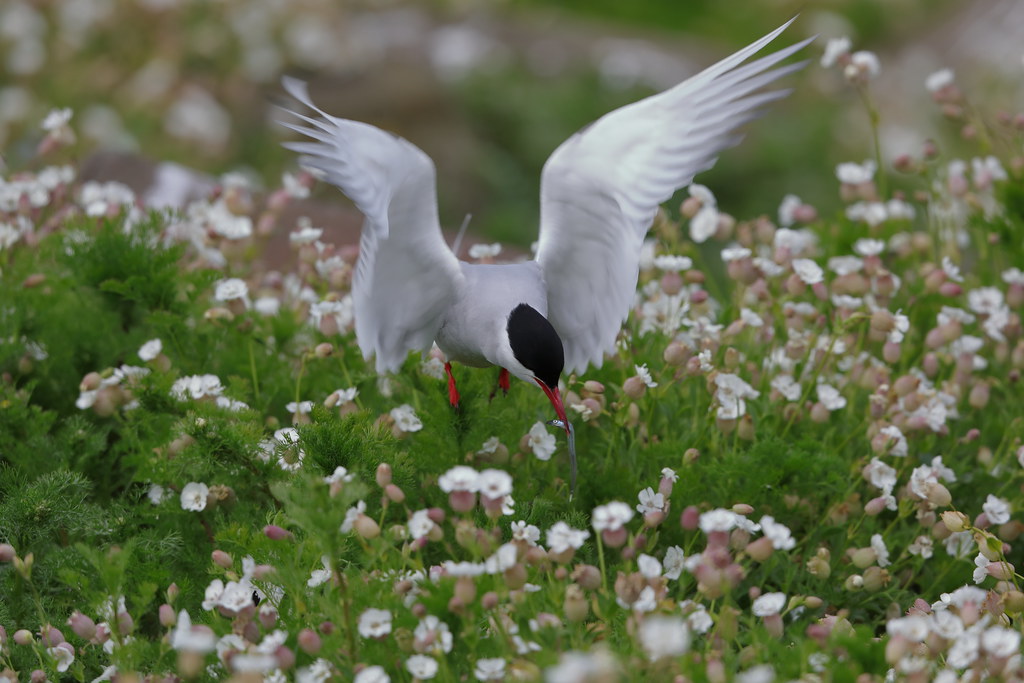
Chances watching the chicks being fed were few and far so instead we made do with shots of terns with fish waiting to visit he nest.

or Terns trying to see off the daily trippers as they disgorge the "May Princess" visitors boat.
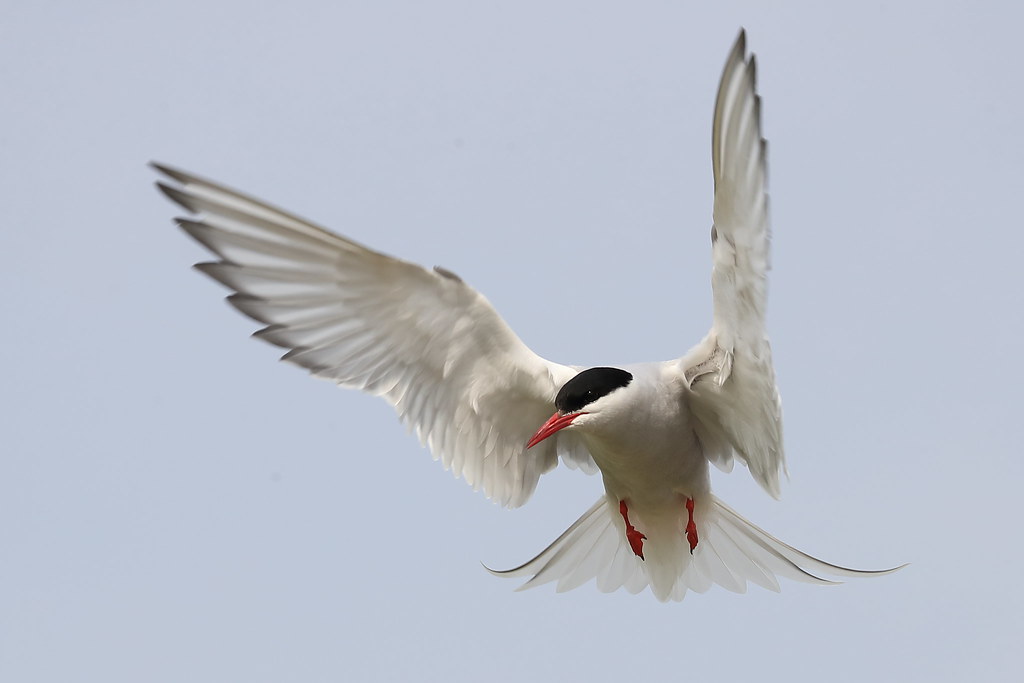
Sometimes they just engage trying to see off each other!

The best chance of action photography was in the harbour which is no more than a concrete slipway leading in to a natural inlet which offers excellent protection from the sometimes rather rough seas that surround the island.
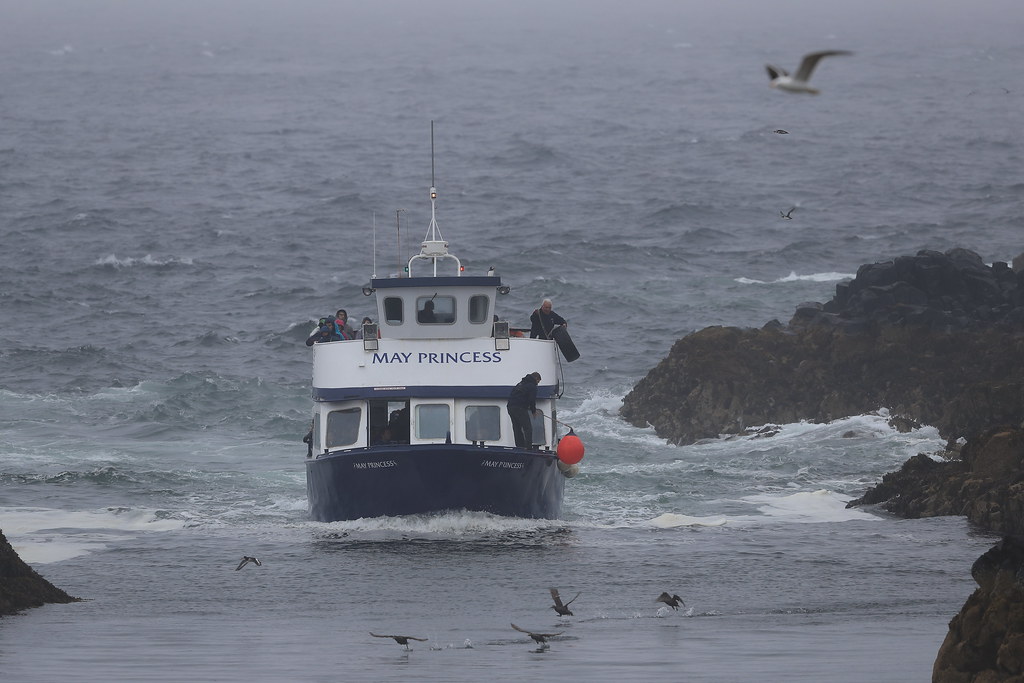
This area is a favoured hunting ground by the resident breeding Eider Ducks, offers a good area for roosting Terns and is also visited by the Grey Seal population too.
This year, and for the first time I got to see some summer plumaged Ruddy Turnstones in this area too.

They look much more attractive than when seen in their rather dull winter coats.

There were around 22 altogether, quite a score for the island too.
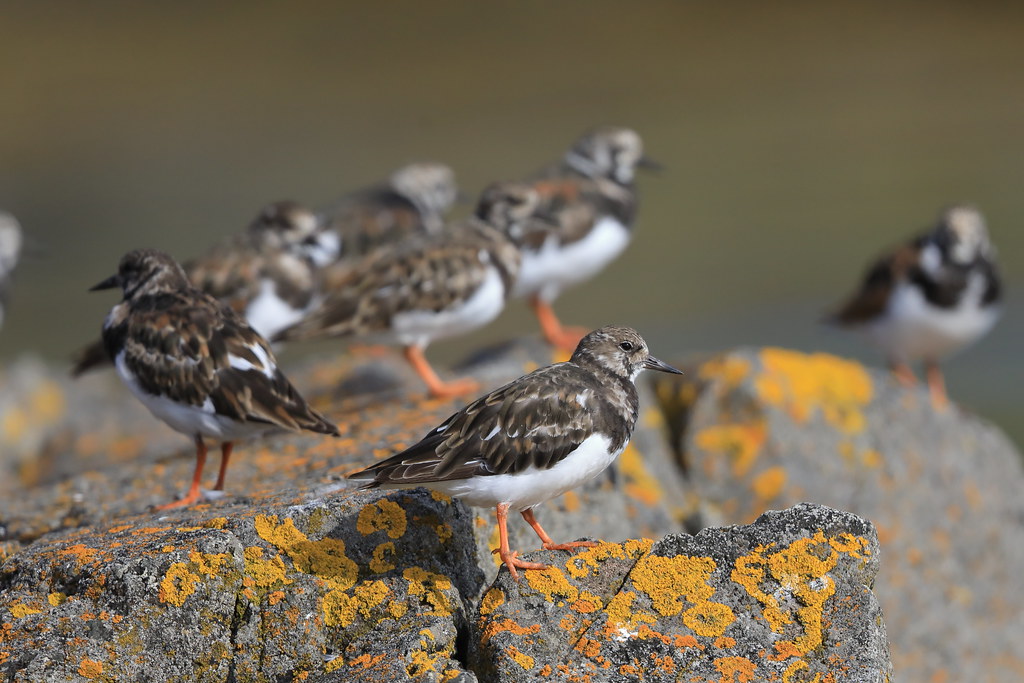
I was there for the Arctic Terns though and they proved to be more difficult than I imagined. With the wind direction blowing in from the sea it meant the birds were flying in the wrong direction. As a photographer you need to be at their level to get the most satisfactory shots but that meant the access to the water had to be at high tide, which in turn meant the concrete slip way was submerged, which then resulted in a rather small field of view. It also meant we needed the sun to be in the right position at high tide too!
You see there's a lot more to getting that shot than simply pressing the shutter button!

Choosing the right shutter speed to freeze the action, the correct aperture for depth of field come next.

When it all finally comes together though it's very rewarding.
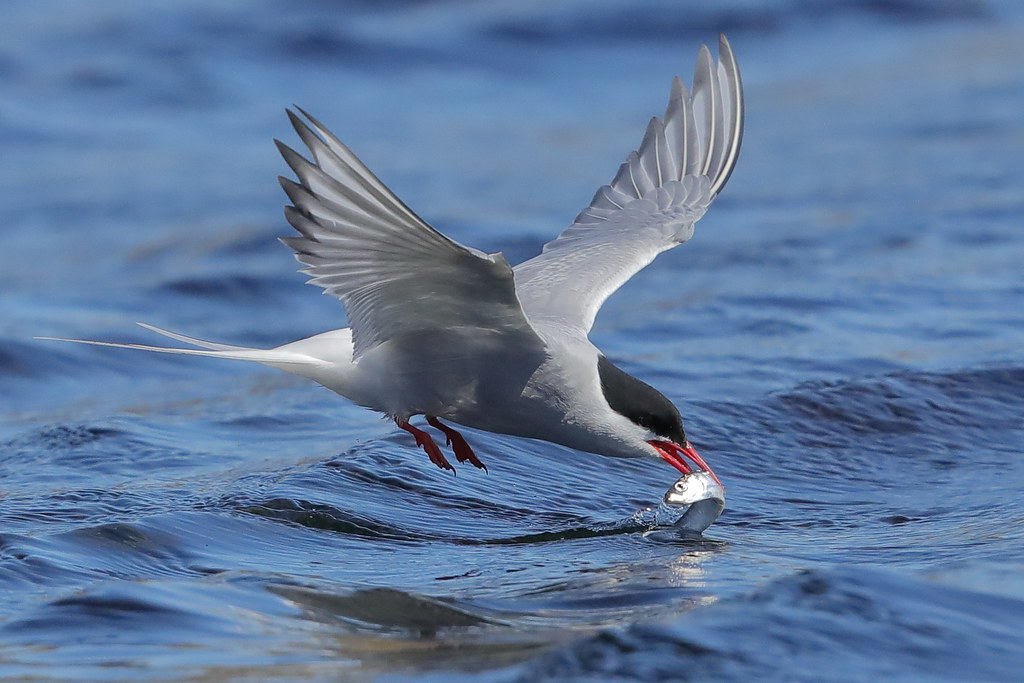
These weren't the shots I'd been hoping for but nevertheless I was pretty happy.

It had taken me all week before everything clicked in to place and I took these on our last full day! The Terns aren't actually catching the fish they are dipping them, presumably to refresh them after they have been wind dried on the return from being caught.Perhaps it makes them easier for the chicks to swallow if they are slippery?
Whatever, they make a good photo opportunity if you can nail the focus!

Although I'd dedicated a lot of time to watching and waiting for Terns, there were other attractions too!
TBC
Mark and I picked up some camera gear and set off to explore the island.
What was I hoping for this year?
Photographs of Terns. The previous year's breeding had been disastrous and not only that it was also late. When I'd been there the Tern activity had been virtually non existent. Few nests had eggs and certainly there was no feeding activity whatsoever. This year things were looking very positive indeed. They were number one priority, after that it was anything of interest really.
One of the attractions of being a guest amongst this huge seabird colony is the opportunity to cut yourself off from the outside world, well with the exception of phoning home, and just sitting back and taking in your surrounds. Watching the everyday struggle of all these creatures makes you realise we as human beings have it easy. Life for so many of these birds is one long battle for survival. The weather is not the only thing they have to battle against. Finding food can involve long and difficult journeys and once they have it, bringing it back to the nest is just another opportunity for a predator to mug you for your catch, worse still, even become part of the food chain. Sitting on eggs for days on end just to have them stolen, long journeys to feed the chicks just to see them predated. I find it heartbreaking to watch but it's all part of the circle of life.
So how did the photography go?
In truth it was OK but not the best year by any means. One of the biggest problems was that the wind often blew quite strongly which is fine but from the wrong direction all week. It makes a huge difference as the wind dictates the way and direction a bird flies, or at least it's landing approach.
Then there was the nesting ground itself. Most of the terns were nesting in amongst the fairly high plant cover. Makes good sense of course as it offers better chances of survival for the chicks. From a photographic point of view not so good though.

Chances watching the chicks being fed were few and far so instead we made do with shots of terns with fish waiting to visit he nest.

or Terns trying to see off the daily trippers as they disgorge the "May Princess" visitors boat.

Sometimes they just engage trying to see off each other!

The best chance of action photography was in the harbour which is no more than a concrete slipway leading in to a natural inlet which offers excellent protection from the sometimes rather rough seas that surround the island.

This area is a favoured hunting ground by the resident breeding Eider Ducks, offers a good area for roosting Terns and is also visited by the Grey Seal population too.
This year, and for the first time I got to see some summer plumaged Ruddy Turnstones in this area too.

They look much more attractive than when seen in their rather dull winter coats.

There were around 22 altogether, quite a score for the island too.

I was there for the Arctic Terns though and they proved to be more difficult than I imagined. With the wind direction blowing in from the sea it meant the birds were flying in the wrong direction. As a photographer you need to be at their level to get the most satisfactory shots but that meant the access to the water had to be at high tide, which in turn meant the concrete slip way was submerged, which then resulted in a rather small field of view. It also meant we needed the sun to be in the right position at high tide too!
You see there's a lot more to getting that shot than simply pressing the shutter button!

Choosing the right shutter speed to freeze the action, the correct aperture for depth of field come next.

When it all finally comes together though it's very rewarding.

These weren't the shots I'd been hoping for but nevertheless I was pretty happy.

It had taken me all week before everything clicked in to place and I took these on our last full day! The Terns aren't actually catching the fish they are dipping them, presumably to refresh them after they have been wind dried on the return from being caught.Perhaps it makes them easier for the chicks to swallow if they are slippery?
Whatever, they make a good photo opportunity if you can nail the focus!

Although I'd dedicated a lot of time to watching and waiting for Terns, there were other attractions too!
TBC
No comments:
Post a Comment